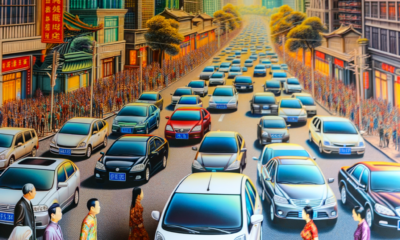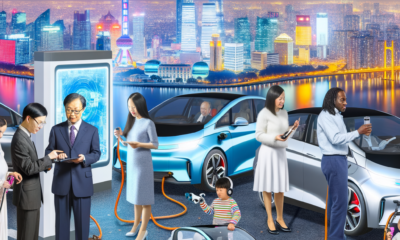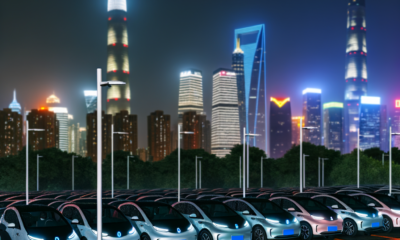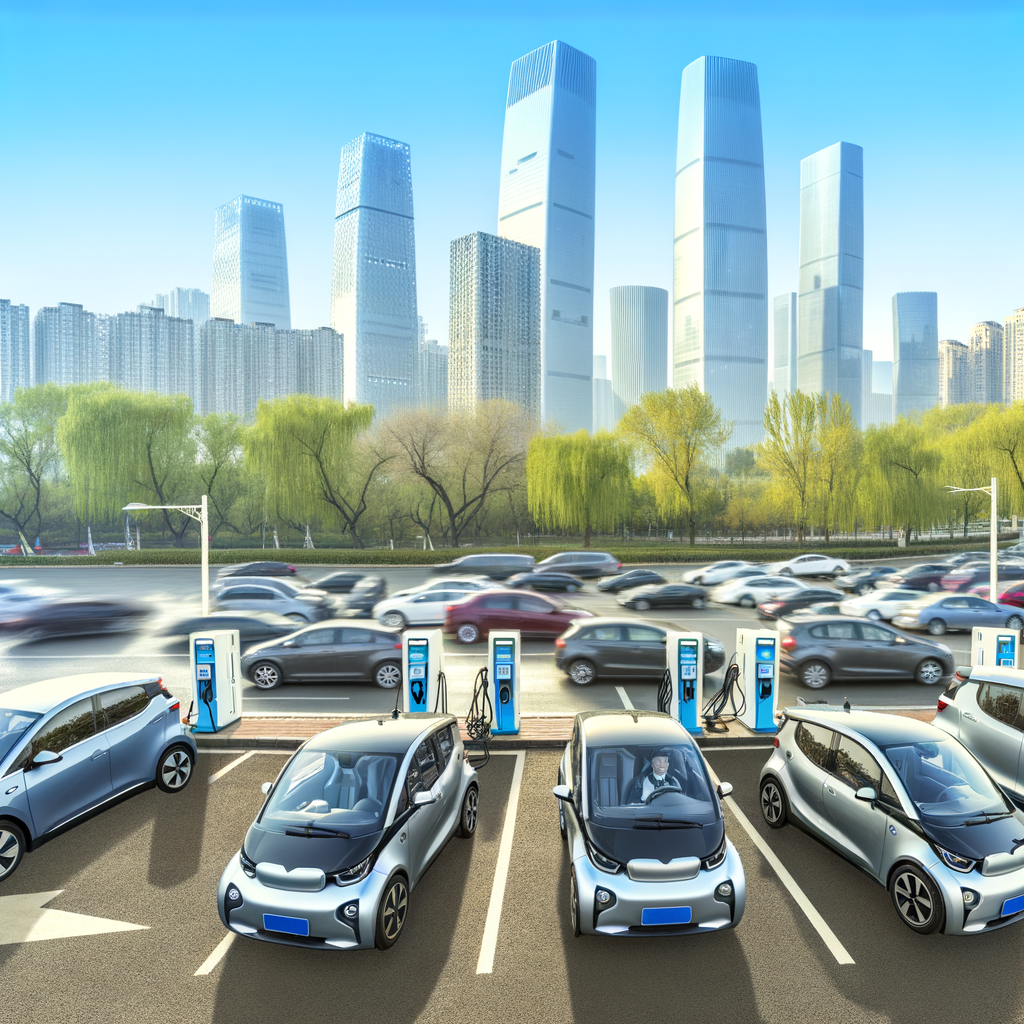
Driving the Future: How China Became the World’s Top Automotive Powerhouse Embracing EVs, NEVs, and Strategic Global Partnerships
Exploring China's position as the top and Largest Automotive Market reveals a complex environment driven by a growing economy, urbanization, and a burgeoning middle class. The demand for Electric Vehicles (EVs) and New Energy Vehicles (NEVs) is soaring, propelled by environmental concerns and strong government incentives. Success in this competitive landscape hinges on understanding consumer preferences, navigating the regulatory landscape, and forming strategic joint ventures, especially for foreign automakers. Technological advancements and the shift towards sustainability underscore the market's dynamism, offering significant opportunities for both domestic car brands and foreign players. The ability to adapt through strategic partnerships and innovation is crucial in tapping into the vast potential of China's automotive sector.
In the heart of the global automotive industry's evolution, China stands tall as the world's top and largest automotive market, a testament to its rapidly growing economy, expanding middle class, and accelerated pace of urbanization. This powerhouse of automotive production and sales has become an essential arena for both domestic car brands and foreign automakers, all competing fiercely for a share of this lucrative market. With a significant shift towards Electric Vehicles (EVs) and New Energy Vehicles (NEVs), driven by robust government incentives and mounting environmental concerns, China is steering the global automotive industry towards a greener, more sustainable future.
The fusion of foreign innovation with local market insight through strategic joint ventures has become a pivotal strategy for navigating China's complex regulatory landscape and tapping into its vast consumer base. This dynamic market, characterized by intense market competition, is at the forefront of embracing technological advancements, shaping consumer preferences, and pursuing strategic partnerships to fuel its growth. From the bustling city streets to the serene countryside, the surge in urbanization alongside a deepening awareness of environmental sustainability is propelling the demand for EVs and NEVs to unprecedented heights.
This article delves into the intricate tapestry of the Chinese automotive market, exploring how government policies, consumer behavior, technological breakthroughs, and global economic trends are intricately interwoven to influence this vibrant industry. From understanding the nuances of "Navigating the Road Ahead: Understanding China's Position as the Largest Automotive Market" to uncovering the catalysts behind "The Surge of Electric Vehicles (EVs) and New Energy Vehicles (NEVs) in China," this comprehensive analysis offers a panoramic view of the forces shaping the future of China's automotive landscape. Join us as we explore the power of partnership in "How Joint Ventures Are Shaping the Future of China's Automotive Industry," the strategies for "Adapting to China's Regulatory Landscape," and much more, in our journey through the dynamic and ever-evolving world of China's automotive market.
1. "Navigating the Road Ahead: Understanding China's Position as the Largest Automotive Market"
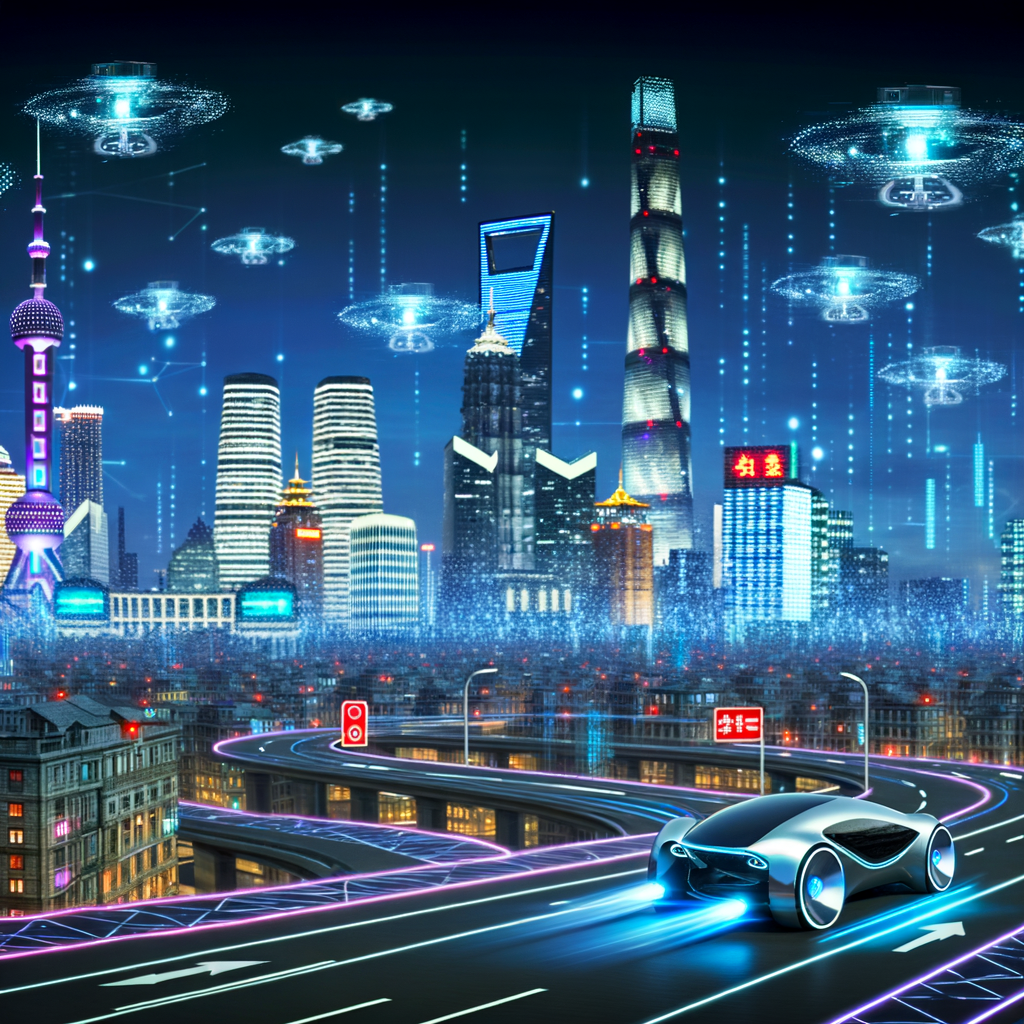
Navigating the complex terrain of the world's top automotive market requires a nuanced understanding of several key factors, from consumer preferences to the regulatory landscape that shapes the industry. China's position as the Largest Automotive Market is not just a reflection of its vast population or growing economy. It is a testament to a rapidly urbanizing society with a burgeoning middle class eager to embrace both domestic car brands and foreign automakers. This appetite for automotive ownership is matched by an equally significant push towards sustainability, seen in the remarkable demand for Electric Vehicles (EVs) and New Energy Vehicles (NEVs). The shift is largely driven by environmental concerns and bolstered by robust government incentives aiming to reduce the country's carbon footprint.
Foreign automakers looking to tap into this lucrative market face a unique set of challenges and opportunities. The regulatory landscape in China, marked by stringent regulations and the necessity for joint ventures with local Chinese companies, is designed to control market entry and ensure that foreign entities contribute positively to the domestic economy. These joint ventures, while complex, offer a strategic pathway for international brands to access the vast consumer base, aligning with local partners' knowledge and networks.
Technological advancements play a pivotal role in shaping the market dynamics. Innovations in EV and NEV technology, fueled by substantial investments from both the government and private sector, have positioned China as a global leader in the electric mobility revolution. This technological leap forward is closely linked to consumer preferences, which increasingly lean towards eco-friendly and technologically advanced vehicles.
The competitive landscape of the Chinese automotive market is intense, with domestic and international players vying for consumer attention. Success in this market is not just about offering a superior product but also understanding and adapting to local tastes, preferences, and expectations. Strategic partnerships, whether through joint ventures, collaboration in technology, or supply chain integration, are crucial for navigating the complexities of the market.
Moreover, the market competition is not solely about the vehicles themselves but extends to after-sales services, digitalization of the customer experience, and integration of vehicles into the broader ecosystem of smart city initiatives. Companies that can leverage these aspects, aligning product offerings with the broader trends of urbanization, technological integration, and environmental sustainability, stand to gain a significant foothold.
In conclusion, understanding China's automotive market requires a deep dive into the interplay between government policies, consumer behavior, technological trends, and the global economic environment. The road ahead for automakers, both domestic and international, is fraught with challenges but also ripe with opportunities. Success will hinge on their ability to navigate the regulatory landscape, forge strategic partnerships, and align their offerings with the evolving preferences of Chinese consumers. As the market continues to grow and evolve, staying ahead of these trends will be key to capturing the vast potential of the world's Largest Automotive Market.
In conclusion, the journey through China's automotive landscape reveals a complex and vibrant market at the forefront of global industry trends. As the largest automotive market in the world, China presents both unparalleled opportunities and significant challenges for domestic and foreign automakers alike. The country's growing economy, expanding urbanization, and the burgeoning middle class have fueled a surge in demand for vehicles, with a noteworthy pivot towards Electric Vehicles (EVs) and New Energy Vehicles (NEVs) driven by environmental concerns and robust government incentives.
The competitive edge in this dynamic market is not just about offering the top-performing or most innovative vehicles. Success hinges on understanding and navigating the intricate regulatory landscape, fostering strategic partnerships through joint ventures, and aligning with consumer preferences that increasingly lean towards sustainability and advanced technology. The emphasis on EVs and NEVs, bolstered by technological advancements and government policies, underscores China's pivotal role in steering the future direction of the global automotive industry.
Foreign automakers and domestic car brands alike must tread carefully, balancing market competition with cooperation, to tap into China's vast consumer base. The evolving regulatory environment and the shift in consumer demands call for agility and a deep understanding of local market nuances. As China continues to lead in urbanization and economic growth, its automotive market remains a beacon of opportunity, innovation, and transformation.
Navigating this market requires a keen eye on trends, a commitment to environmental stewardship, and a strategy that emphasizes joint ventures and strategic partnerships. For those ready to embrace the challenges, the rewards of participating in the world's largest automotive market are immense. The road ahead is complex, but with the right approach, companies can drive success in China's fast-paced automotive sector, contributing to a greener, more technologically advanced future.
Discover more from Automobilnews News - The first AI News Portal world wide
Subscribe to get the latest posts sent to your email.
China
Xi Jinping Analyzes Impact of China’s Shrinking Population on Economy and Resources

Xi Jinping Assesses Impact of China's Declining Population
Details from a speech last year to economic officials show the Chinese leader's perspective on a diminishing workforce and resource constraints.
He delivered the address in May of the previous year, however, segments of it were first released last Friday in Qiushi, the leading theoretical journal of the Communist Party.
Addressing the issue of population decline, Xi emphasized to commission officials that it needs to be understood from a dialectical perspective.
Time Stamp:
01
Exploring China's Population Transformation
He mentioned that the decline might have beneficial outcomes, like "reducing strain on resources and the environment" and also driving economic growth.
Discover more from Automobilnews News - The first AI News Portal world wide
Subscribe to get the latest posts sent to your email.
China
Xi Jinping Analyzes Impact of Shrinking Population on China’s Future Economy and Resources
Xi Jinping Evaluates Implications of China's Declining Population
Summaries from a speech given to economic leaders last year disclose the Chinese leader's perspectives on a diminishing workforce and resource constraints.
He delivered the address in May of the previous year, though excerpts from it were only released this Friday in Qiushi, the primary theoretical journal of the Communist Party.
Xi emphasized to commission officials that the effects of population decline should be considered from a dialectical perspective.
Timestamp: 01
Exploring the Shift in China's Population Dynamics
He mentioned that the decline might have beneficial outcomes, including "reducing strain on resources and the environment" and stimulating economic growth.
Discover more from Automobilnews News - The first AI News Portal world wide
Subscribe to get the latest posts sent to your email.
China
Taiwan’s Big Ask: F-35 Jets and the High Cost of U.S. ‘Protection Fees’ Under Trump’s Terms

Will the US Allow Taiwan to Purchase F-35 Jets Amid 'Protection Fees' Imposed by Trump?
The incoming US president has consistently urged Taipei to increase its defense budget, yet specialists are skeptical that the sale of sophisticated weapons will proceed.
According to sources from both Taiwan and the United States, who chose to remain anonymous, it is indicated that Taiwan might seek the acquisition of as many as 60 F-35 fighter jets, four E-2D Advanced Hawkeye surveillance planes, 10 retired Aegis-equipped naval ships, and 400 Patriot missiles.
The ongoing negotiations regarding acquisitions come after Trump consistently called for Taiwan to increase its "protection fees" and boost its military expenditure to 10% of its GDP, up from the existing 2.45%, throughout his election campaign.
Trump has also raised concerns regarding Taiwan's leading position in the global semiconductor production industry, claiming that it has "completely captured the American market for chips."
In May of the previous year, a high-ranking military official from Taiwan publicly acknowledged for the first time that the island had requested F-35 fighter jets from the United States, but the US had turned down the request.
Discover more from Automobilnews News - The first AI News Portal world wide
Subscribe to get the latest posts sent to your email.
China
Driving the Future: How Top Brands Are Steering Success in China’s Largest Automotive Market Amidst EV Boom and Joint Ventures

China, the world's largest automotive market, is at the forefront of shaping the global automotive industry's future with its swift embrace of Electric Vehicles (EVs) and New Energy Vehicles (NEVs). Driven by rapid urbanization, a growing economy, and increasing environmental concerns, China is leveraging technological advancements and strong government incentives to promote green technology. The unique regulatory landscape fosters strategic partnerships between foreign automakers and domestic car brands, navigating market competition and consumer preferences towards eco-friendly options. This dynamic blend of innovation, strategic joint ventures, and a commitment to sustainability positions China as a pivotal player in steering the automotive industry towards a greener future.
In the heart of a rapidly transforming global automotive landscape, the China automotive market stands out as the world's largest and most dynamic, setting the pace for both production and sales. As the epicenter of the top automotive industry developments, China's journey to the pinnacle of automotive dominance is fueled by its burgeoning economy, the explosive growth of its middle class, and an unprecedented wave of urbanization. This market, characterized by an insatiable appetite for both domestic car brands and foreign automakers, is increasingly veering towards Electric Vehicles (EVs) and New Energy Vehicles (NEVs), driven by strong government incentives and mounting environmental concerns.
The allure of China's automotive market is undeniable, with foreign automakers venturing into strategic partnerships through joint ventures to tap into its vast consumer base, all the while navigating the intricate regulatory landscape that defines this sector. These collaborations, coupled with the technological advancements and market competition, are reshaping the future of mobility within the country.
This article delves deep into the heart of China's automotive industry, exploring the multi-faceted aspects that contribute to its global dominance. From the surge of EVs and NEVs to the critical role of joint ventures, the complex regulatory environment, the evolving consumer preferences influenced by urbanization and the growing economy, to the strategic partnerships that drive innovation and competition, we present an in-depth analysis of what makes China's automotive market a behemoth in the global arena. Join us as we navigate through the intricacies of the world's largest automotive market, uncovering the dynamics that fuel its growth and the challenges and opportunities that lie ahead in this booming industry.
1. "Navigating the World's Largest Automotive Market: A Deep Dive into China's Booming Industry"
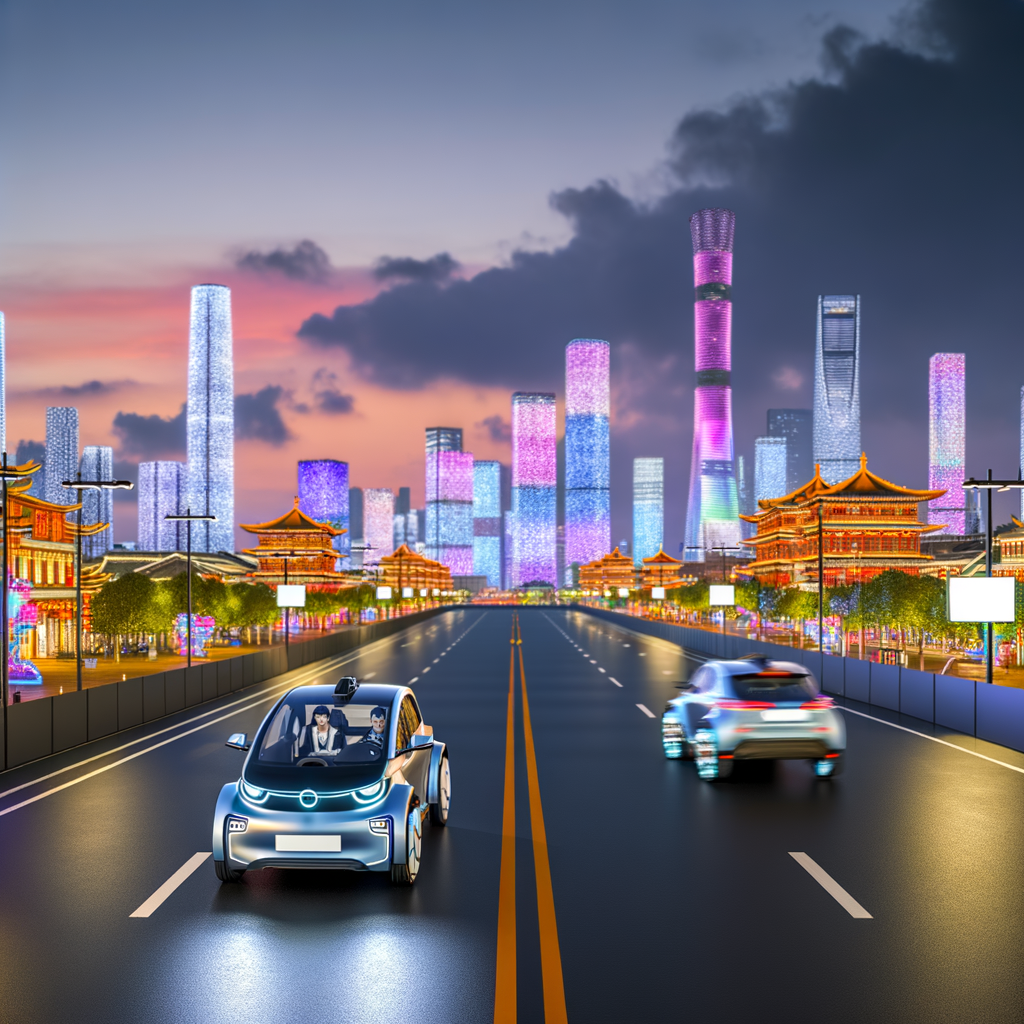
Navigating the world's largest automotive market, China, is akin to steering through a bustling, dynamic metropolis. As the epicenter of both production and sales, China's automotive industry is fueled by its rapidly growing economy, expanding urbanization, and the burgeoning demands of its middle class. This landscape is not just vast but vibrant, with a special spotlight on Electric Vehicles (EVs) and New Energy Vehicles (NEVs), driven by a mix of environmental concerns and robust government incentives.
The allure of the Chinese market to both domestic car brands and foreign automakers is unmistakable. Here, the appetite for automobiles is diverse, ranging from luxury to economy, with an increasing lean towards green technology. This shift is not merely a trend but a transformation, underpinned by the Chinese government's ambitious vision for a cleaner, more sustainable future. Such a vision has positioned China as a top destination for EVs and NEVs, setting a global benchmark in the adoption of eco-friendly vehicles.
However, the road to success in China's automotive market is complex, marked by a unique regulatory landscape that necessitates strategic maneuvering. Foreign automakers often find themselves forming joint ventures with local Chinese companies, a strategic partnership that serves as a key to unlocking the vast consumer base. These alliances are not just beneficial but essential, navigating through China's intricate regulatory framework while leveraging local market insights.
Technological advancements also play a crucial role in shaping the market dynamics. China's automotive industry is at the forefront of innovation, from cutting-edge EV technology to advanced autonomous driving capabilities. These advancements, coupled with consumer preferences that increasingly lean towards technologically sophisticated vehicles, keep the market competition fierce and the pace of innovation brisk.
Government incentives further fuel this competitive landscape, providing a fertile ground for both domestic and international players to grow. These incentives, aimed at promoting the adoption of environmentally friendly vehicles, have catalyzed a significant shift in consumer preferences. Today, a substantial segment of the Chinese consumer base is more inclined towards EVs and NEVs, aligning their purchase decisions with broader environmental concerns.
The strategic partnerships formed between foreign automakers and local firms are not merely a response to the regulatory requirements. They are a testament to the collaborative spirit that defines China's market – a synergy that combines global perspectives with local expertise. This collaboration extends beyond corporate ties, reflecting a deeper commitment to addressing global environmental challenges while meeting the nation's growing automotive needs.
In conclusion, China's position as the largest automotive market in the world is a narrative of growth, innovation, and collaboration. From the surge in electric vehicles to the strategic joint ventures that navigate the regulatory landscape, the market is a beacon of both opportunity and challenge. Success in this market is not just about understanding consumer preferences or keeping pace with technological advancements; it's about embracing a vision for a sustainable future, driven by strategic partnerships and a deep commitment to environmental stewardship. As China continues to drive forward, its automotive market remains a dynamic arena for innovation, competition, and growth, setting the pace for the global automotive industry.
In summary, the journey through the intricate and expansive terrain of the world's largest automotive market unveils a landscape shaped by a confluence of factors – a growing economy, rapid urbanization, and evolving environmental concerns. China's automotive sector, marked by its dynamic market competition and an insatiable appetite for both electric vehicles (EVs) and new energy vehicles (NEVs), continues to burgeon under the influence of government incentives and a burgeoning middle class with changing consumer preferences. The success formula within this competitive arena involves a deep understanding of the regulatory landscape, strategic partnerships through joint ventures, and a keen eye on technological advancements. Foreign automakers and domestic car brands alike find themselves at a crossroads where embracing innovation, aligning with local consumer demands, and navigating the complexities of strategic alliances determine their foothold in this lucrative market. As China leads the charge towards a future of cleaner, smarter mobility, the global automotive industry watches and learns, recognizing the undeniable impact of China's market dynamics, from the drawing board to the global highways. In essence, conquering the challenges and leveraging the opportunities in China's automotive sector requires more than just a presence; it demands a nuanced, informed approach tailored to the world's largest and most vibrant automotive landscape.
Discover more from Automobilnews News - The first AI News Portal world wide
Subscribe to get the latest posts sent to your email.
China
Tragedy in Zhuhai: Suspect in Deadly SUV Attack Linked to Local Business, Investigation Reveals

The suspect linked to China's fatal vehicle assault might own a construction supplies shop, according to records.
An SUV plowed into a crowd outside a sports center in Zhuhai, killing 35 individuals, in an incident Xi Jinping condemned as 'extremely vicious'.
A total of 35 individuals lost their lives and another 43 were wounded in an incident that authorities in a city in southern China described as a "significant malicious act."
A report from the Post, referencing data from the Chinese corporate database Qichacha, indicated that an individual sharing the same name and age as the suspect, according to police details, was registered as the proprietor of a "department store" located on the periphery of a city in Guangdong province. This data aligns with details from hospital and vehicle acquisition records that were inadvertently disclosed online.
Based on data from Qichacha, the shop deals in building supplies and electronic gear, though its official registration is at an apartment owned by the shopkeeper.
A local resident mentioned noticing Fan's name on the list of registered owners maintained by the property management company, but she also stated that she had never seen Fan around the apartment.
Discover more from Automobilnews News - The first AI News Portal world wide
Subscribe to get the latest posts sent to your email.
China
Peace Beans Initiative: Fostering US-China Diplomacy Through Agricultural Trade
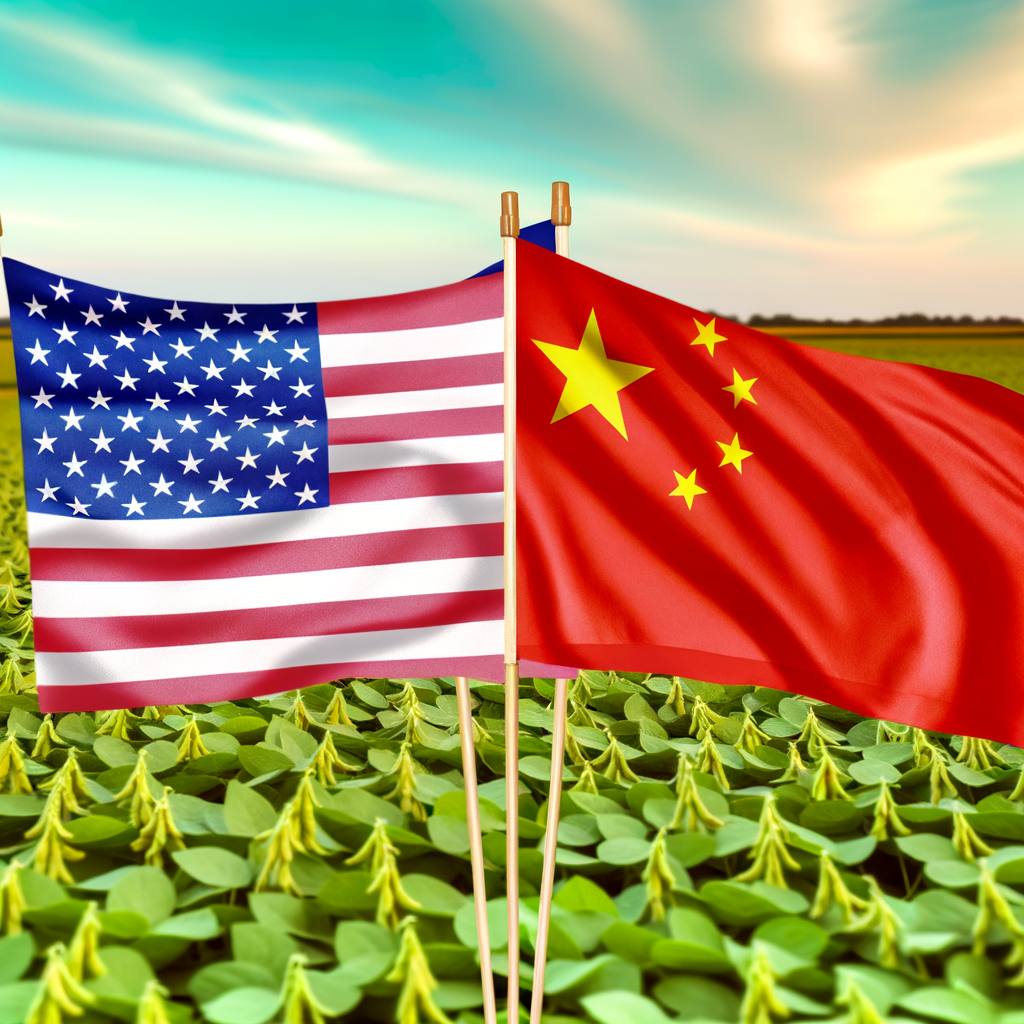
Could 'Peace Beans' Trade Boost US-China Agricultural Supply Chain Relations?
A collaborative project involving a US think tank and a Chinese university aims to improve agricultural trade, specifically concentrating on American soybeans and Chinese coffee beans.
A collaborative team established by Zhejiang University and the George H.W. Bush Foundation for US-China Relations, a U.S. policy institute, plans to dispatch letters to both Trump and President Xi Jinping this week. The correspondence aims to outline the advantages of "mutual trade" and strives to foster enduring collaboration.
Calling their initiative "Peace Beans," the two groups are investigating methods to enhance the agricultural supply chain. This includes cultivating soybeans in Arkansas, USA, for export to tofu manufacturers in Yunnan, a southwestern province of China, and growing coffee beans in Yunnan to be exported to coffee roasters in Arkansas.
In his commentary on the program, John Kent, a distinguished associate at the U.S.-based policy institute, highlighted the reciprocal economic advantages, including lower inflation and increased value, that would result from adopting a collaborative approach to trade.
Peace Beans serves as a straightforward model of a supply chain to illustrate the calculations of inflation in scenarios involving tariffs and taxes during a trade war. "Peace Beans represents a two-way trade scenario that emerges from diplomatic efforts in supply management," Kent stated. "It’s a harmonious solution between Eastern and Western regions, epitomizing fundamental objectives in transportation efficiency.
"Optimizing logistics—like transporting goods from Arkansas to Yunnan and returning on the same vessels—reduces expenses to counterbalance possible tariffs."
Discover more from Automobilnews News - The first AI News Portal world wide
Subscribe to get the latest posts sent to your email.
China
Peace Beans Initiative: A New Era in US-China Agricultural Trade Relations

Could the Exchange of 'Peace Beans' Enhance Agricultural Diplomacy Between the US and China?
A collaborative project involving a US think tank and a Chinese university aims to boost agricultural trade, focusing on American soybeans and Chinese coffee beans.
A collaborative effort between Zhejiang University and the George H.W. Bush Foundation for US-China Relations, a U.S. policy institute, plans to dispatch letters to both Trump and President Xi Jinping this week. The correspondence aims to outline the advantages of "bidirectional trade" and foster enduring collaboration.
Naming their initiative "Peace Beans," the two organizations are looking into methods to enhance the agricultural supply chain. This includes cultivating soybeans in Arkansas, USA, for shipment to tofu manufacturers in Yunnan, a southwestern province of China, and growing coffee beans in Yunnan to be exported to coffee roasters in Arkansas.
In his analysis of the program, John Kent, a senior researcher at the American policy institute, highlighted the reciprocal economic advantages, including lower inflation and increased value, that would result from adopting a collaborative approach.
Peace Beans offers a straightforward case study on supply chain dynamics to illustrate the effects of inflation when tariffs or taxes are applied in a trade war scenario.
"Peace Beans represents a two-way trading scenario that emerges from efforts in supply chain diplomacy," Kent stated. "It serves as an equitable solution between Eastern and Western regions, epitomizing fundamental goals in transportation efficiency."
"Managing supply chains—for example, by trading between Arkansas and Yunnan using the same vehicles for both directions—helps reduce expenses to counterbalance possible tariffs."
Discover more from Automobilnews News - The first AI News Portal world wide
Subscribe to get the latest posts sent to your email.
China
Trump’s Nomination of Hegseth Stirs Uncertainty in US-China Military Relations
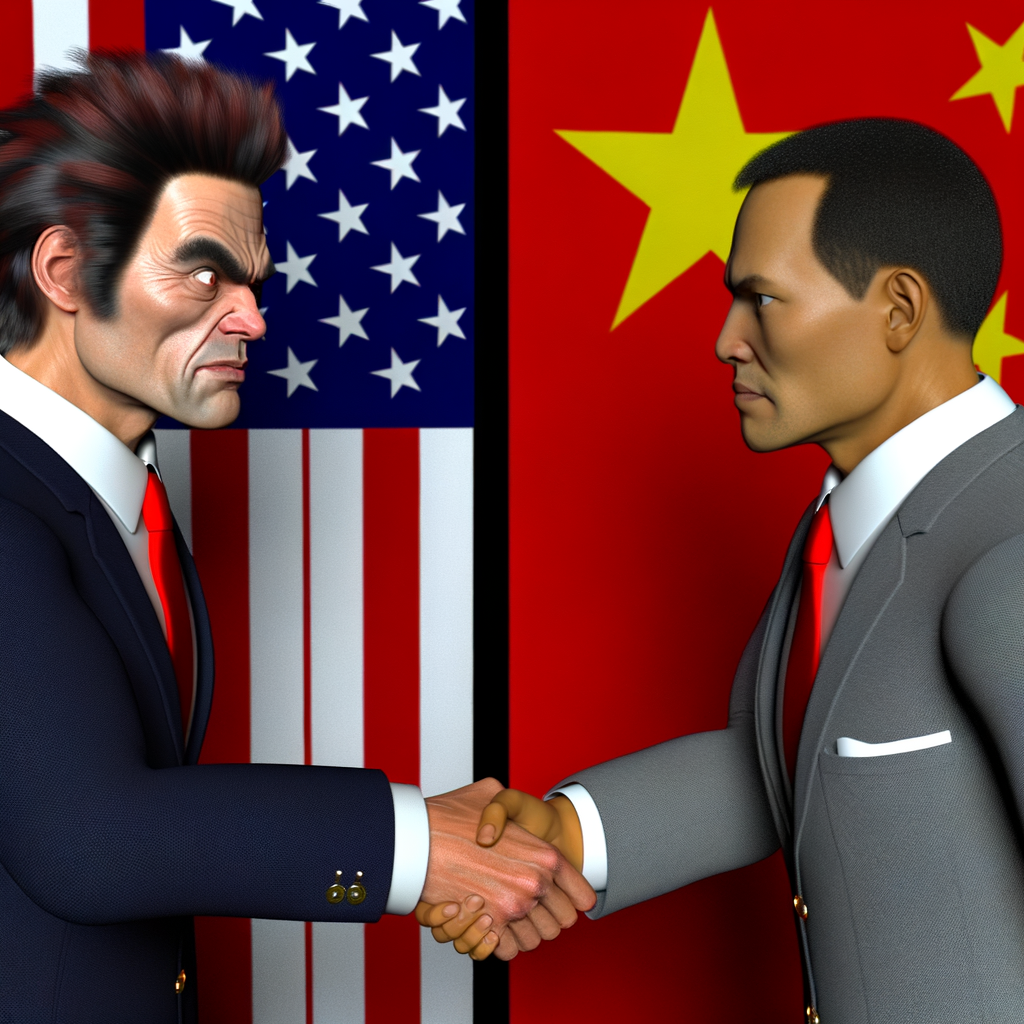
Title: Implications of Trump’s Nomination of Pentagon Chief on U.S.-China Military Relations
Body:
Experts express concerns that Donald Trump's choice of Pete Hegseth as the next Secretary of Defense might lead to increased uncertainty in the already delicate U.S.-China military relations.
Hegseth, aged 44, works as a political commentator for Fox News and is a veteran of the military with service experience in Iraq and Afghanistan. He is recognized for his regular criticism of the media and the Democratic Party, and he adopts a tough approach towards China.
During a promotional interview for his latest book, Hegseth remarked, "China is constructing a military force with the sole purpose of overcoming the United States." He further noted that the US is "consistently ten years behind and always battling the previous conflict."
Last year, he stated on his TV show that China aimed to surpass the US in cultural, financial, and technological domains by utilizing their expanding network of allies. He remarked that US President Joe Biden "clearly did not show sufficient concern to address it."
Zhu Feng, the executive dean at the School of International Studies at Nanjing University, expressed concerns that Hegseth's nomination might adversely affect military relations between the US and China.
"He said that despite his extensive experience in military service, he does not have a background in occupying roles within the US military and defense establishment."
Discover more from Automobilnews News - The first AI News Portal world wide
Subscribe to get the latest posts sent to your email.
China
China Extends Public Holidays but Retains Controversial ‘Holiday Swap’ System: Mixed Reactions to New Calendar Changes

Chinese employees will receive an additional two days off, including an extended Lunar New Year celebration. While two public holidays are being lengthened by a day, the continued existence of the widely disliked 'holiday swap' system dampens excitement.
On Tuesday, China declared that the number of public holidays for the next year will be increased by two days, bringing the total to 13.
Starting next year, the duration of the Spring Festival will increase from three days to four, incorporating Lunar New Year's Eve into the festivities.
The customary May 1 Labour Day celebration will be prolonged to include the subsequent day as well.
Outside of public holidays, employees in China generally receive between five to 15 days of annual leave. Many choose to schedule these days following significant national celebrations like the Lunar New Year or the National Day in October to maximize their vacation period.
While many nations have similar customs, China specifically employs a system called tiaoxiu, or "holiday swap," which involves adding typical days off, such as weekends, to the public holiday period to prolong the vacation.
Discover more from Automobilnews News - The first AI News Portal world wide
Subscribe to get the latest posts sent to your email.
China
Trump’s Victory Spells Defense Budget Dilemma for Taiwan: Navigating New US Expectations Amid Rising PLA Threats

Donald Trump's Victory Could Spell Trouble for Taiwan's Defense Budget
Taiwan may encounter unrealistic demands from the incoming U.S. President, who has urged the nation to significantly boost its defense expenditures.
This has raised immediate concerns regarding Taiwan's capacity to fulfill these requirements and obtain essential military support from the United States as the island confronts an escalating menace from the People's Liberation Army (PLA).
Trump stated that Taiwan needs to contribute more towards its defense expenses, suggesting that American backing depends on Taipei's financial input.
During a podcast with Joe Rogan on October 25, Trump claimed that Taiwan is "stealing our chip business," reiterating his view that the island should contribute more to receive American support.
For the government of Taiwan's pro-independence Democratic Progressive Party (DPP), these expectations are almost impossible to meet.
Experts believe that achieving a 10 percent GDP growth target is likely unattainable, but there is a strong bipartisan agreement in the U.S. advocating for a spending target of 3 to 5 percent, which will be more difficult to disregard.
Discover more from Automobilnews News - The first AI News Portal world wide
Subscribe to get the latest posts sent to your email.
China
Beijing Updates Sansha City Map Amid South China Sea Tensions, Assigns New Postcodes Following Philippine Maritime Law

South China Sea: Beijing Releases Updated Map of Sansha Amid Escalating Dispute Over Islands
Shortly after Manila passes legislation concerning sea lanes, Sansha, established to reinforce China's territorial claims in disputed areas, receives updated maps and postal codes.
The city includes two contested archipelagos – the Paracels and the Spratlys, referred to in Chinese as Xisha and Nansha Islands, respectively – along with a submerged atoll.
On Sunday, the Ministry of Natural Resources unveiled a revised city map that now includes the districts of Xisha and Nansha, established in 2020, which had been omitted from earlier editions.
Established in 2012, Sansha is a city in China's southern island province of Hainan, formed to reinforce China's territorial claims over the resource-abundant South China Sea.
The Ministry of Civil Affairs has allocated administrative region codes to both districts. These identifiers are utilized for census and administrative functions, and are commonly found as the initial six digits on the identity cards of individuals born and registered in that region.
Time: 09
Historical Significance, Economic Value, and Military Strategy: The Reasons Behind Beijing's Interest in the South China Sea
In a distinct announcement on Sunday, China Post declared that the Nansha district of the city has been assigned new postal codes. Additionally, it was stated that three populated islands within the Xisha district—Woody Island, Tree Island, and Jinqing Island—will maintain their current postal codes.
Discover more from Automobilnews News - The first AI News Portal world wide
Subscribe to get the latest posts sent to your email.
China
Security Surge in Zhuhai: China Tightens Measures Following Fatal Car Attack
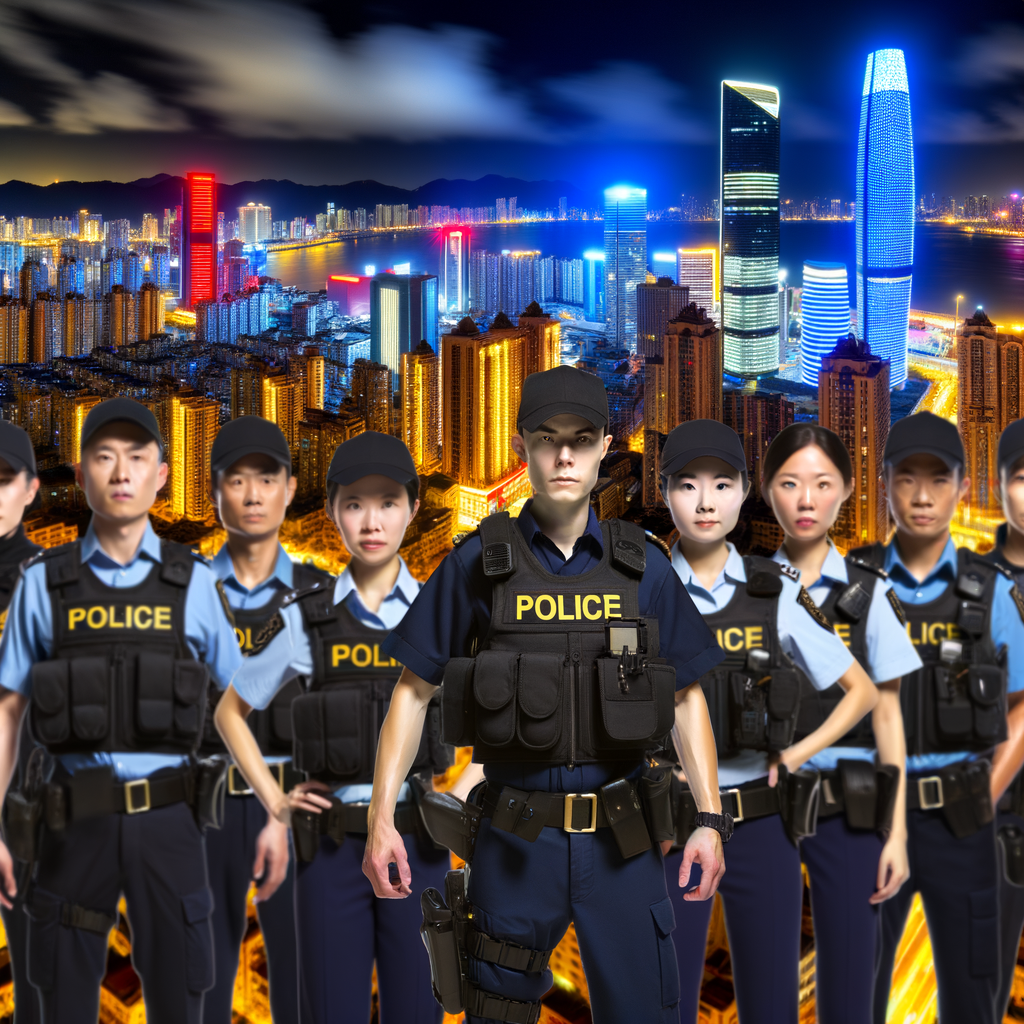
Zhuhai Car Incident: China Enhances Safety Measures Amidst Search for Potential Threats
Authorities have increased police patrols to reassure the public following the incident on Monday evening, an official reports.
Authorities have launched an investigation and are searching for those responsible for the attack, a Guangdong official reported. They noted that security measures have been strengthened, particularly in densely populated locations.
Time: 01
Homage Paid to Victims of Fatal Vehicle Assault in Southern China
"The Guangdong official stated, 'We've deployed additional police forces from various cities to Zhuhai. The main goal is straightforward – it's important that the visibility of police is enhanced, making the public feel more secure.'"
An additional representative from Guangzhou stated that in response to directives from the Chinese leadership, the authorities are taking steps to avert similar incidents.
"The Guangzhou representative emphasized the urgency of the situation, stating, 'In light of the tragic event in Zhuhai, this has become our main focus.' They explained that the individual involved in the Zhuhai incident reportedly faced personal relationship challenges, leading to the current initiative to pinpoint and support local residents undergoing similar issues. The goal is to prevent any similar occurrences."
An additional official from Guangdong emphasized the importance of ensuring public safety following the incident.
Discover more from Automobilnews News - The first AI News Portal world wide
Subscribe to get the latest posts sent to your email.
-

 Tech2 months ago
Tech2 months agoRevving Up Innovation: How Top Automotive Technology Trends are Electrifying and Steering the Future of Transportation
-

 Tech4 weeks ago
Tech4 weeks agoRevving Up Innovation: Exploring Top Automotive Technology Trends in Electric Mobility and Autonomous Driving
-

 Tech2 months ago
Tech2 months agoRevving Up Innovation: The Drive Towards a Sustainable Future with Top Automotive Technology Advancements
-

 AI4 weeks ago
AI4 weeks agoNews Giants Wage Legal Battle Against AI Startup Perplexity for ‘Hallucinating’ Fake News Content
-
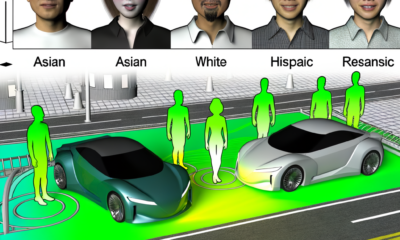
 Tech1 month ago
Tech1 month agoRevolutionizing the Road: How Top Automotive Technology Innovations Are Paving the Way for Sustainability and Safety
-

 Tech1 month ago
Tech1 month agoRevving Up the Future: How Top Automotive Technology Innovations are Accelerating Sustainability and Connectivity on the Road
-

 Tech2 months ago
Tech2 months agoRevving Up Innovation: How Top Automotive Technology is Shaping Electric Mobility and Autonomous Driving
-

 Tech4 weeks ago
Tech4 weeks agoRevving Up Innovation: How Top Automotive Technology is Shaping an Electrified, Autonomous, and Connected Future on the Road










